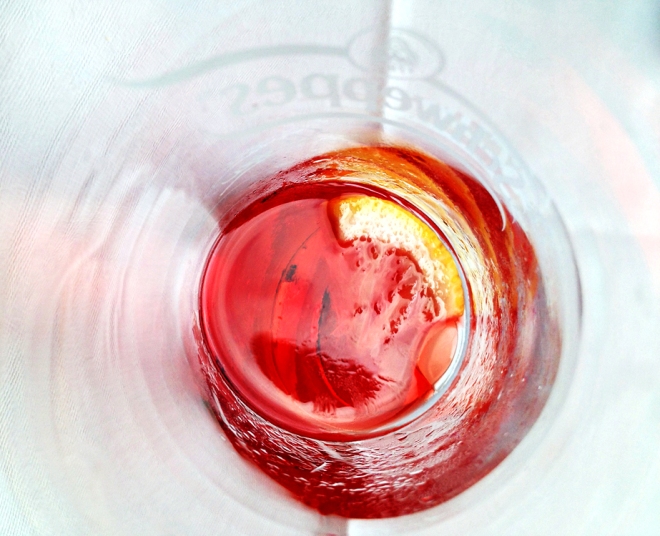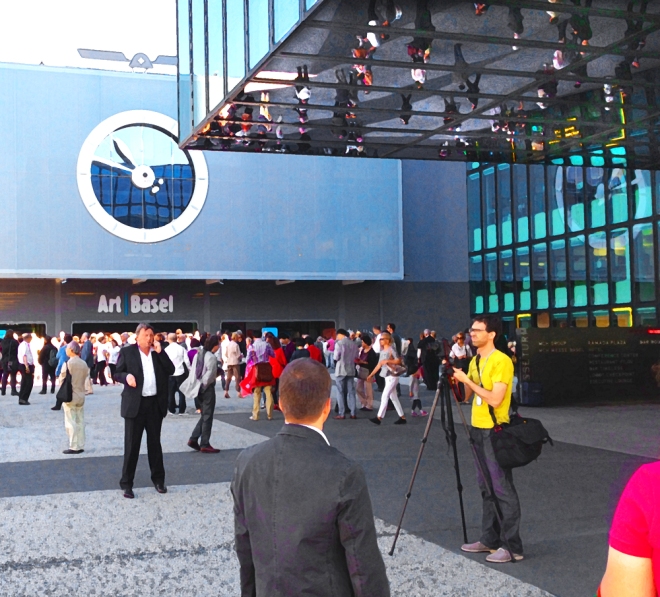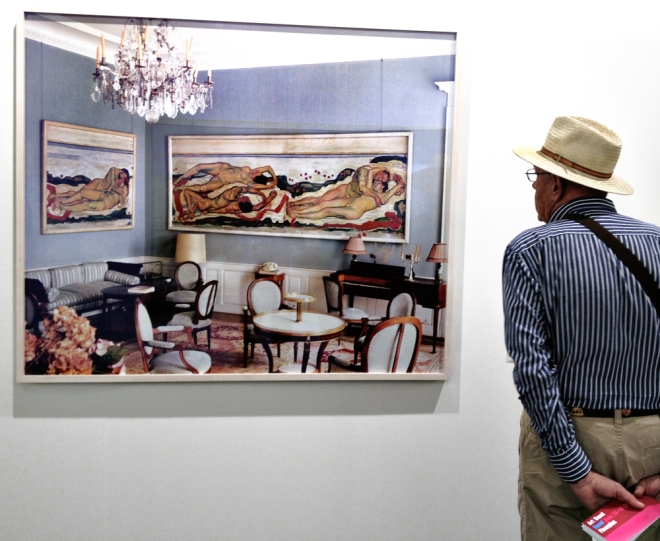A couple of years ago I took this iPhone image (with Hipstamatic app) at the central market square in Basel, Switzerland. I thought the colours around that yellow bucket were so crisp and a joyful and the Hipstamatic app created the frame, yellow to the left and pink to the right in amazing harmony with the flowers.
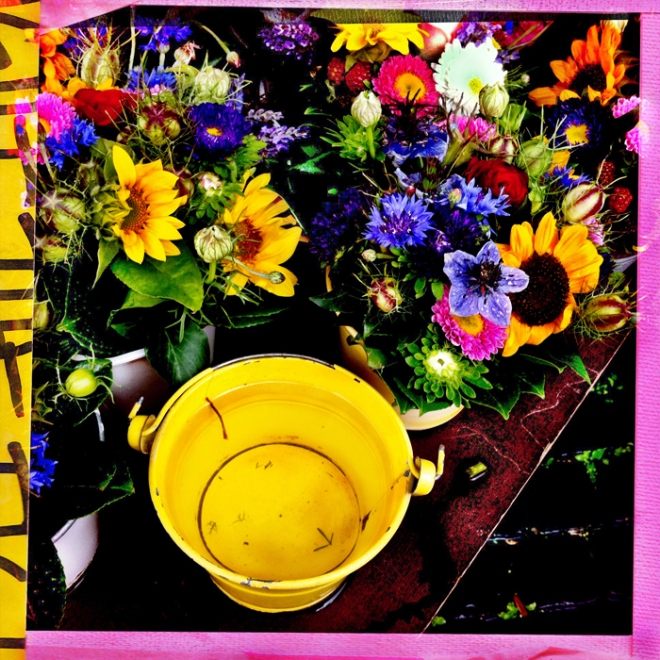
Basel Flowers # 1 © Jan Oberg 2013
The more I looked at it, I began to see something potentially abstract about this rather spontaneous shot. And, so, I began to work quite a bit with it in Photoshop and here is another “whiter” version of it that I actually ended up printing on aluminum.
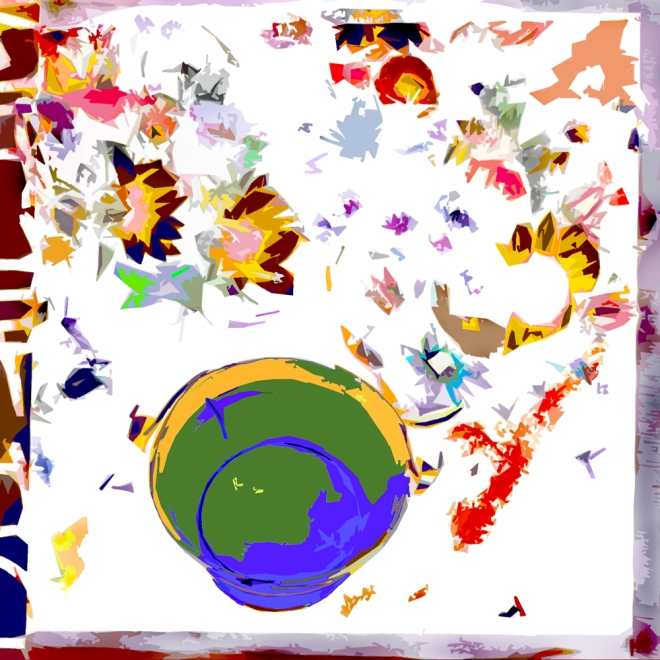
Basel Flowers # 3 © Jan Oberg 2013
The interesting thing about printing on metal is that what is white in an image will become the colour of the metal since there is no white pigment in the printer. What is also interesting is that it is possible to make virtually unlimited colour combinations on a piece like this. You can decide that what is blue should become green, what is yellow should become pink etc. So if you love colours and enjoy experimenting with various options and expressions, you can in principle go on forever. So if this is called # 3 – it could be changed again and again and become # 333…
Now, I cut out the upper parts of this second version and used it for fun on my personal profile page on Facebook. I had no idea that these happy colours would cause many-more-than-usual and very positive reactions. If a simple, everyday photographic shot can make people happy, I want to find out what that “it” is. I want a dialogue about my photos (even the “photoshopped” versions of them) with people on Facebook, LinkedIn and here on this blog.
And why not?
If I had had an exhibition at a gallery and talked with the visitors, they would have told me something – anything – and I would be able to learn more about how people perceive and interpret what I have created.
After all – is there anything more fascinating than discussing how we perceive reality and how images create associations of thoughts and emotions in us? My works of course exist whether nobody, one or thousands see them. But is is a “bonus” beyond words to dialogue with an image as point of departure.
When somebody says “it’s beautiful” I would be a fool if I didn’t appreciate it as a statement and also did not get curious about the cause. Because we have more than enough of bad quality, violent and boring images around us every day. Regrettably, to many – perhaps most – people it’s probably much more difficult to define what it is that expresses beauty and peace – whereas we also know violence and ugliness the moment we see it.
That said, look out for your little glimpse of beauty next time you go shopping vegetables at your market square! And imagine it as the same thing – but changed like # 3 above! A photo is a photo is a photo is a…

